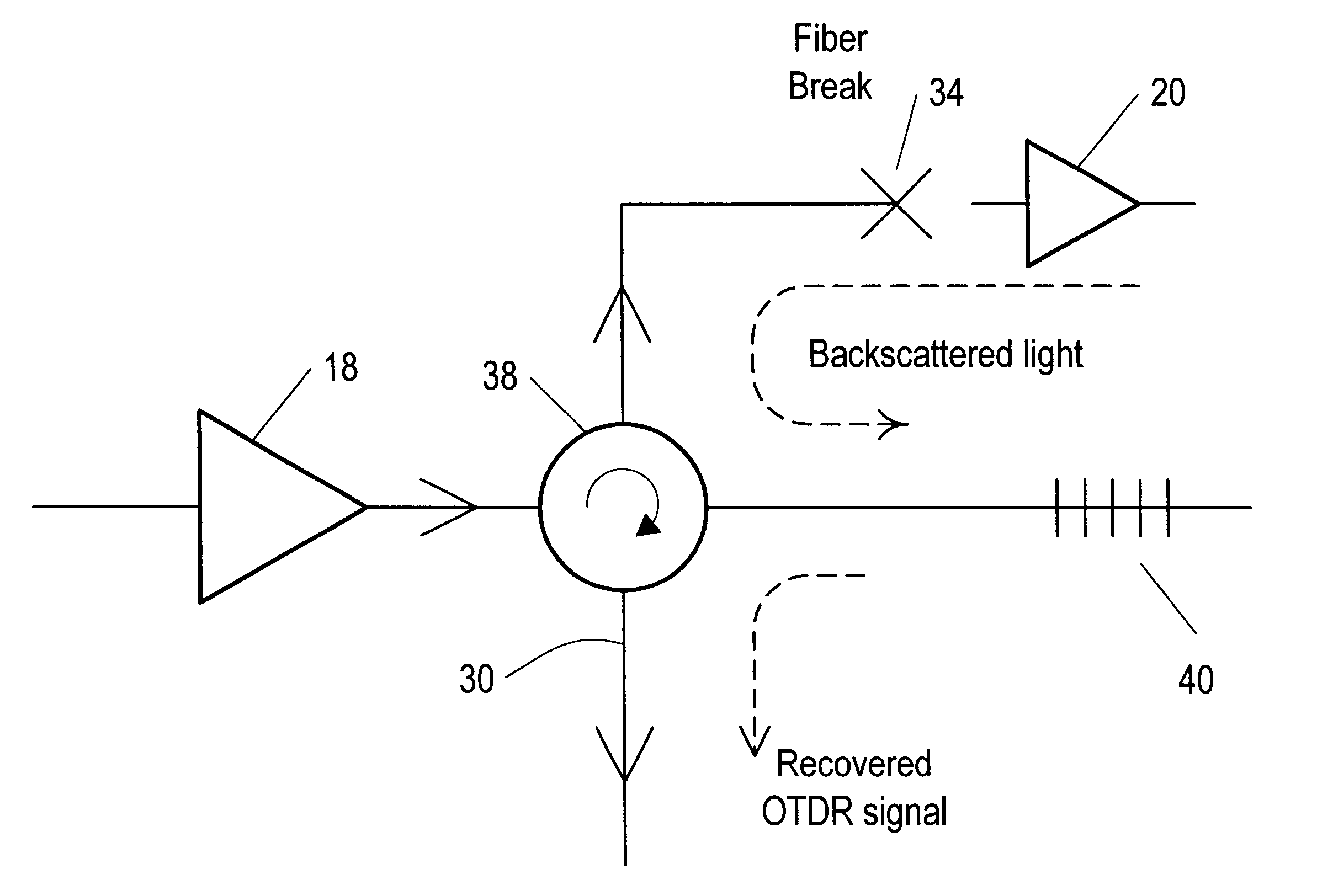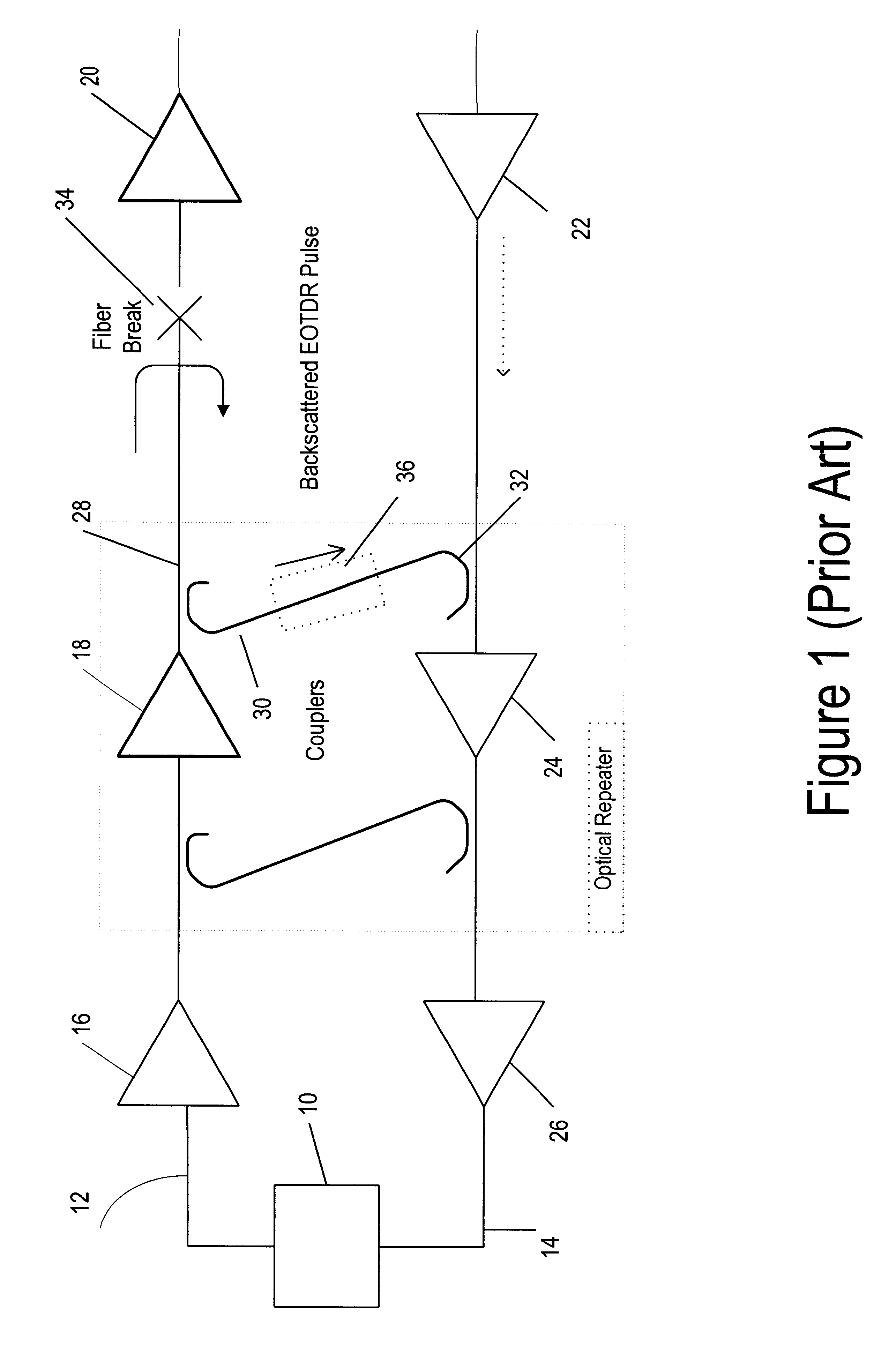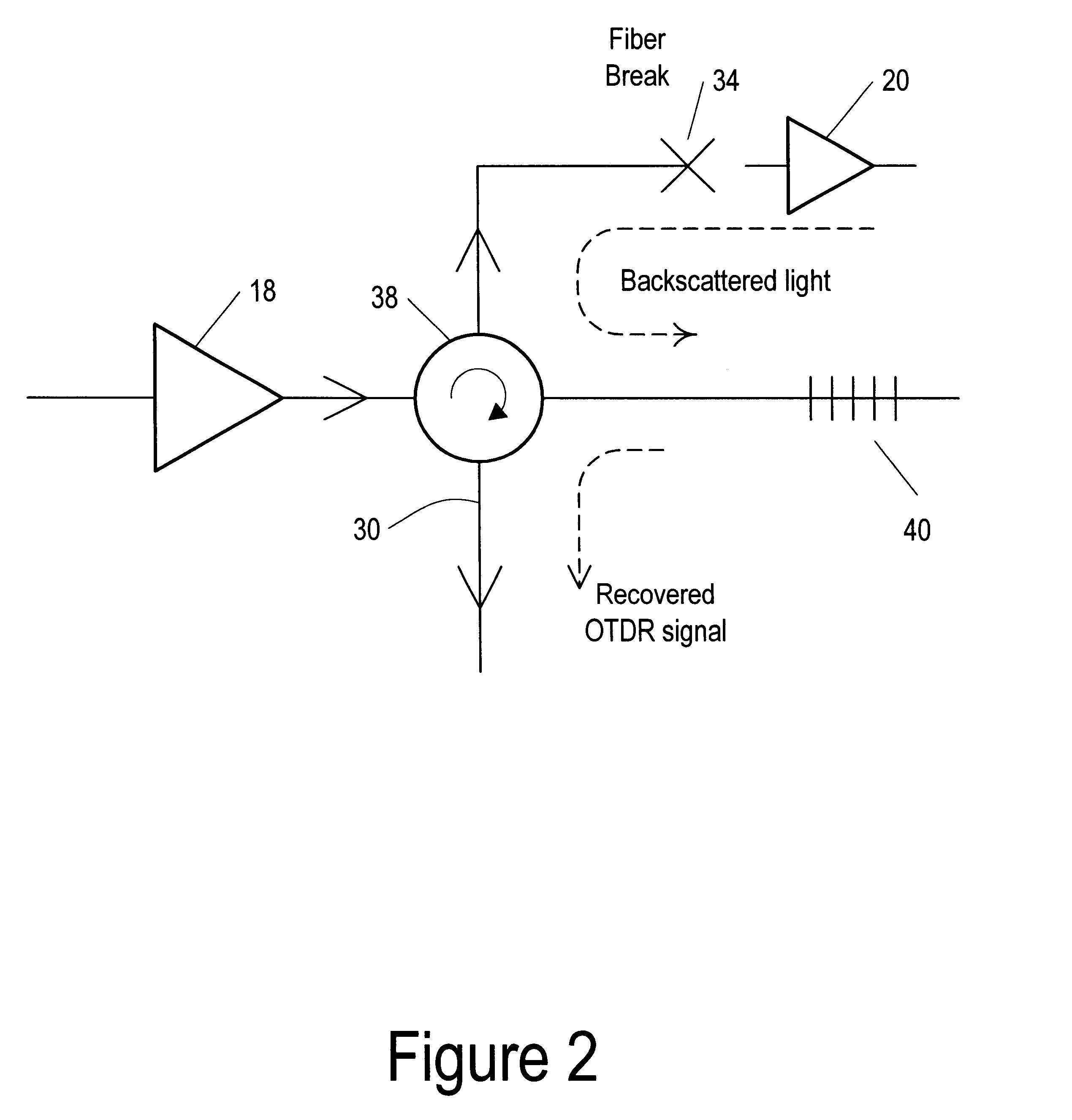Optical signal transmission network with fiber-break detection
a technology of optical signal transmission network and fiber break detection, which is applied in the direction of optical apparatus testing, transmission monitoring, instruments, etc., can solve the problems of unidirectional amplifier/repeater in such a system, use of conventional otdr launching a probe, and inconvenient operation
- Summary
- Abstract
- Description
- Claims
- Application Information
AI Technical Summary
Benefits of technology
Problems solved by technology
Method used
Image
Examples
Embodiment Construction
Referring now to FIG. 1 there is shown a prior art bidirectional long haul optical transmission system such as is described in reference 1 previously referred to. In this system a transmitter / receiver terminal 10 is coupled to an outbound fibre 12 for transmission signals and an inbound fibre 14 for receiving signals. The terminal 10 has the capability of providing a specific wavelength signal for OTDR purposes on the outbound fibre. The outbound and inbound fibres are routed via optical amplifiers / repeaters 16, 18, 20, 22, 24, 26 three of which are shown in each line. An optical directional coupler 28 is provided following amplifier / repeater 18 of the outbound line and is arranged to tap a proportion of the optical signal from the line, The coupler is coupled via a fibre 30 to the inbound line at the input to amplifier / repeater 24 via a second directional coupler 32. A break in the outbound line is shown at 34. In use, to detect the break, a test signal is sent from terminal 10 and...
PUM
 Login to View More
Login to View More Abstract
Description
Claims
Application Information
 Login to View More
Login to View More - R&D
- Intellectual Property
- Life Sciences
- Materials
- Tech Scout
- Unparalleled Data Quality
- Higher Quality Content
- 60% Fewer Hallucinations
Browse by: Latest US Patents, China's latest patents, Technical Efficacy Thesaurus, Application Domain, Technology Topic, Popular Technical Reports.
© 2025 PatSnap. All rights reserved.Legal|Privacy policy|Modern Slavery Act Transparency Statement|Sitemap|About US| Contact US: help@patsnap.com



